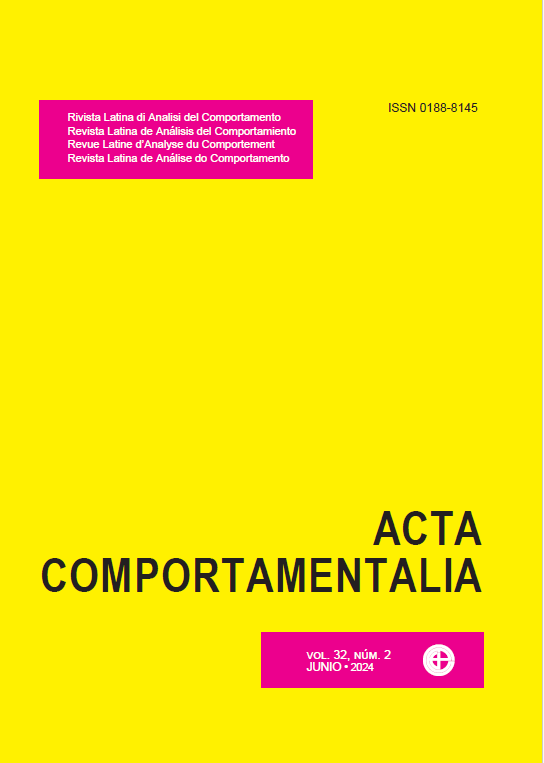Sexual Violence and University Context: A Survey in a Brazilian Institution
DOI:
https://doi.org/10.32870/ac.v32i2.88353Keywords:
Behavior Analysis, cultural practices, culture analysis, sexual harassment, rape, students, teachers, sexual assaultAbstract
International data about sexual violence and national results regarding gender-based violence in higher education institutions reveal alarming numbers. Studies demonstrate a need for sexual violence indicators in Brazilian universities that allow a contextual and cultural analysis of the phenomenon. Considering this scenario, the study objectives were to investigate how higher education institution members evaluate security, services, and rights related to sexual violence in the university context and to conduct a survey on different types of sexual assaults and their characteristics. For this investigation, 185 students and 43 professors answered an adapted questionnaire containing Likert-scale items and multiple-choice questions. Descriptive and inferential (Student’s t-test, Pearson’s chi-squared test) statistical analyses were performed. The results point to insecurity regarding the institution’s actions on the violence and unfamiliarity with rights and procedures in sexual violence situations. Also, in the matter of sexual violence reports, there was low confidence that appropriate procedures would be taken when the institution’s authorities were notified. Women and students had statistically significant results on the negative evaluation of several items investigated compared to men and professors. Comparing the student and professor groups, we observed that more students reported sexual violence situations in all the assaults investigated. Of the students, 8,11% were forced penetration victims, 27,57% were sexually touched without their consent, 26.49% claimed they had heard inappropriate sexual comments about them, and 14,05% felt as if they were being bribed or threatened to engage in sexual behavior in the university context. As for professors, 11,62% have seen someone appear or wait for them in a threatening manner, 9,3% have been touched sexually without consent, received some inappropriate sexual comment, received unwanted contacts by remote means, and were spied on or followed in the university context. Of women students, 53,8% said they had experienced at least one of the violence investigated in the university context compared to 37,5% of male students. As for female professors, 30,78% responded that they had experienced at least one form of violence in the context of the institution compared to 11,76% of male teachers. Significant relations were found between the majority of assaults investigated and the gender and sexual orientation of the participants. Effects related to the violence experienced included psychiatric medication use, psychological treatment, missed deadlines, and university environment absenteeism. We discuss sexually violent cultural practices present at the university as a controlling agency, in particular, contributing to sexual assault invisibility and maintenance of male domination. In the light of radical behaviorism, we indicate the need for policies to confront sexual violence in higher education institutions, including the dissemination of information about institutional services and rights and encouraging support practices for violence victims in the presence of a reception structure to the notifications. Some propositions we bring are appropriate referrals of specific protocols and flowcharts, training, and human and administrative resources that guarantee effectiveness.
Downloads
Downloads
Published
How to Cite
Issue
Section
License

<a rel="license" href="http://creativecommons.org/licenses/by-nc-sa/4.0/"><img alt="Licencia de Creative Commons" style="border-width:0" src="https://i.creativecommons.org/l/by-nc-sa/4.0/88x31.png" /></a><br />Este obra está bajo una <a rel="license" href="http://creativecommons.org/licenses/by-nc-sa/4.0/">licencia de Creative Commons Reconocimiento-NoComercial-CompartirIgual 4.0 Internacional</a>.






